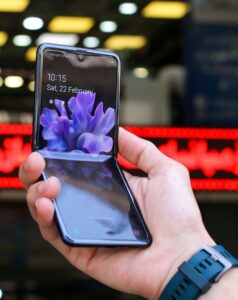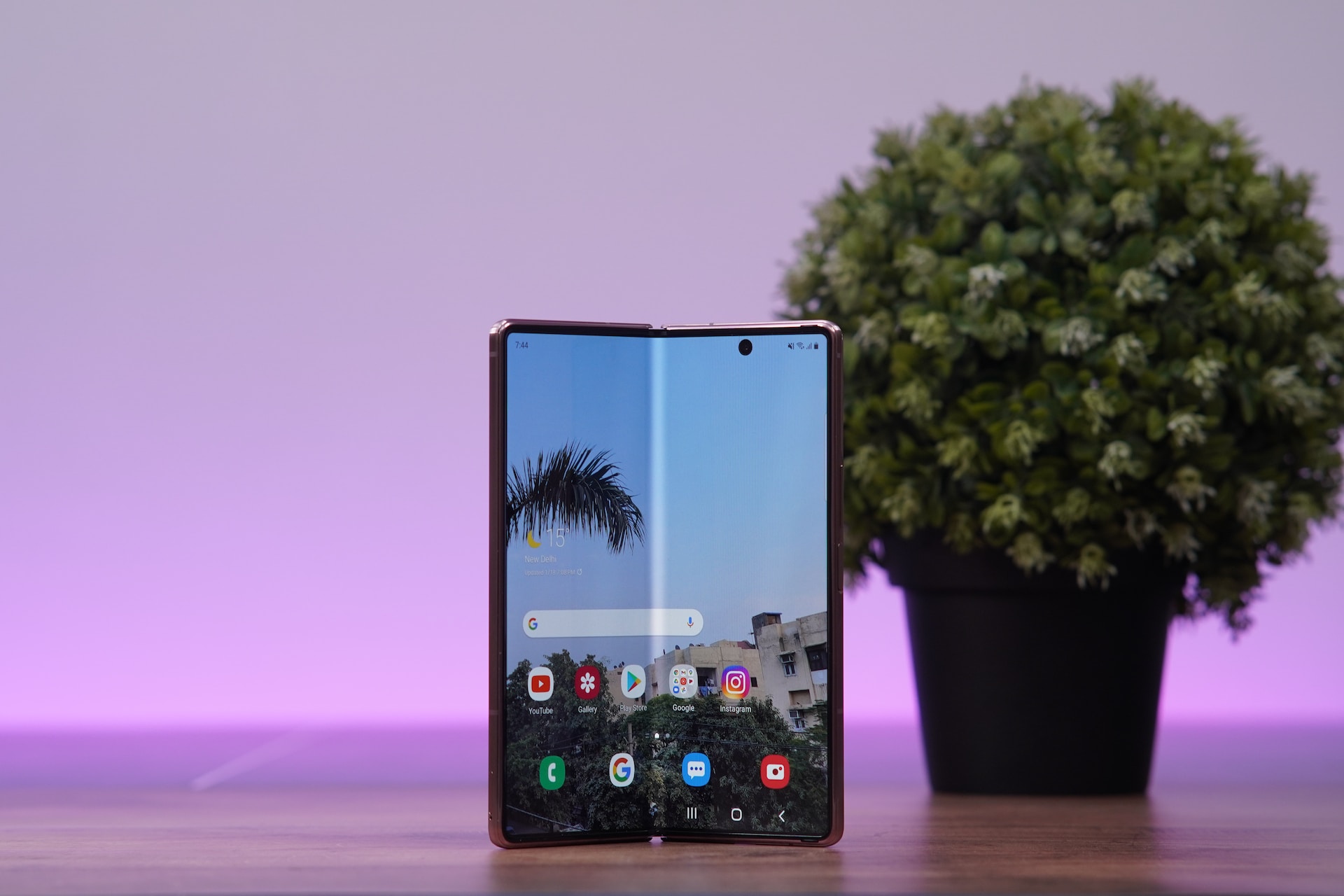Are you tired of the same old smartphone design? Do you crave something new and innovative? Look no further than foldable phones. These cutting-edge devices are revolutionizing the mobile industry, offering a unique and exciting user experience. But what exactly are foldable phones, and how do they work? We can surely access any website we want to from any of them – from bingo-promo-code.co.uk/ to the BBC that’s for sure. Which brands are leading the way in foldable phone innovation? And what are the pros and cons of owning one? In this article, we’ll explore all these questions and more. We’ll also provide tips on how to choose the right foldable phone for your needs and compare the best models on the market in 2023. So join us as we dive into the world of foldable phone technology and discover what the future holds for this exciting development.
What Are Foldable Phones and How Do They Work?

Foldable phones are a relatively new type of smartphone that have been gaining popularity in recent years. As the name suggests, these devices can be folded in half, allowing for a larger screen size without sacrificing portability. The technology behind foldable phones involves flexible displays and hinges that allow the device to bend without breaking.
One of the key benefits of foldable phones is their versatility. When unfolded, they offer a large screen size that is ideal for watching videos or browsing the web. When folded, they can easily fit into a pocket or purse, making them more portable than traditional smartphones with large screens. Additionally, some foldable phones offer unique features such as split-screen multitasking or the ability to use one half of the screen as a keyboard while typing on the other half.
While foldable phones are still relatively new and expensive compared to traditional smartphones, they represent an exciting development in mobile technology. As manufacturers continue to refine their designs and improve durability, we can expect to see even more innovative features and use cases for foldable phones in the future.
Which Brands Are Leading the Way in Foldable Phone Innovation?
When it comes to foldable phone innovation, there are a few brands that stand out from the rest. Samsung is one of the pioneers in this field, having released their first foldable phone back in 2019. Since then, they have continued to improve upon their design and technology, with their latest offering being the Galaxy Z Fold 3. This device boasts a larger cover screen and an improved hinge mechanism, making it more durable than its predecessors.
Another brand that has been making waves in the foldable phone market is Huawei. Their Mate X2 model features an inward-folding design, which allows for a larger display when unfolded. The device also boasts impressive camera capabilities and fast charging technology. However, due to ongoing trade restrictions with the US government, Huawei’s ability to continue innovating in this space remains uncertain.
Finally, we cannot overlook the contributions of Motorola in this field. Their Razr model offers a unique flip-phone design that folds vertically rather than horizontally like most other foldable phones on the market. While some may argue that this design limits its functionality compared to other models, it certainly stands out as a stylish and nostalgic option for those looking for something different.
The Pros and Cons of Owning a Foldable Phone

As with any new technology, owning a foldable phone comes with its own set of pros and cons. On the one hand, foldable phones offer a unique and innovative design that allows for greater screen real estate without sacrificing portability. This means you can enjoy a larger display for streaming videos or browsing the web, while still being able to easily fit your phone in your pocket or purse.
Another advantage of owning a foldable phone is the ability to multitask more efficiently. With a larger screen, you can have multiple apps open at once and easily switch between them without having to constantly minimize and maximize windows. This can be especially useful for productivity tasks like editing documents or responding to emails on-the-go.
However, there are also some potential downsides to consider before investing in a foldable phone. One major concern is durability – because these devices are designed to bend and flex, they may be more prone to damage from drops or impacts. Additionally, some users may find the folding mechanism itself to be cumbersome or difficult to use, especially if they have limited dexterity or mobility in their hands.
How to Choose the Right Foldable Phone for Your Needs
Choosing the right foldable phone for your needs can be a daunting task, especially with so many options available on the market. The first thing to consider is your budget. Foldable phones are generally more expensive than traditional smartphones, so it’s important to set a realistic budget before you start shopping. Keep in mind that the price of a foldable phone will depend on its features and specifications.
The next thing to consider is the size and design of the phone. Foldable phones come in different sizes and designs, so it’s important to choose one that suits your preferences. Some foldable phones have larger screens when unfolded, while others have smaller screens but are more compact when folded. You should also consider whether you want a phone that folds vertically or horizontally.
Another important factor to consider is the features and specifications of the phone. Look for a phone with a powerful processor, ample storage space, and good camera quality. You should also check if the phone has 5G connectivity, as this will ensure faster internet speeds and better overall performance. Additionally, make sure that the battery life is sufficient for your needs.
Comparing the Best Foldable Phones on the Market in 2023

Now that we have a better understanding of what foldable phones are and how they work, let’s take a closer look at the best options on the market in 2023. Samsung continues to lead the way with their Galaxy Z Fold series, which offers a large tablet-like screen when unfolded and a compact phone-sized display when folded. The latest model, the Galaxy Z Fold 4, boasts improved durability and an even larger screen than its predecessor.
Another top contender is the Huawei Mate X4, which features an outward-folding design for a seamless transition between phone and tablet modes. It also boasts impressive camera capabilities and fast charging technology. Meanwhile, Motorola’s Razr 2 offers a nostalgic flip-phone design with modern foldable technology, making it a stylish option for those who value both form and function.
When comparing these top foldable phones, it’s important to consider factors such as price, durability, battery life, and overall performance. Each device has its own unique strengths and weaknesses, so it’s crucial to do your research before making a purchase. Ultimately, the best foldable phone for you will depend on your individual needs and preferences.
What the Future Holds for Foldable Phone Technology and Development
The future of foldable phone technology and development is exciting, with many advancements expected in the coming years. One area that is likely to see significant progress is the durability of foldable phones. Currently, many users are hesitant to invest in a foldable phone due to concerns about the device’s longevity. However, manufacturers are working on developing stronger materials and more robust hinges that will make these devices more durable.
Another area where we can expect to see improvements is in the software and user experience of foldable phones. As more people adopt these devices, developers will be motivated to create apps and interfaces that take full advantage of their unique form factor. This could include features like split-screen multitasking or seamless transitions between folded and unfolded modes.
Finally, we can expect to see even more innovation in terms of design and form factor. While current foldable phones are impressive, they still have some limitations when it comes to size and shape. In the future, we may see devices that can be folded into even smaller sizes or ones that can be rolled up like a scroll. The possibilities are endless, and it’s an exciting time for anyone interested in this emerging technology.



